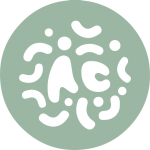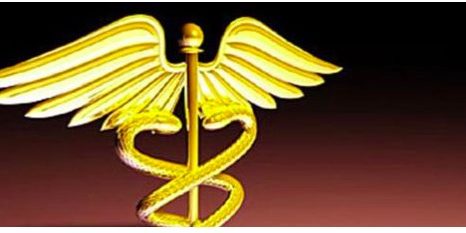
Dr. Ayşegül Çoruhlu
Cellular Longevity
Circadian Health
Reverse Aging
Longevity
Diğer Makalelerim
Does the coronavirus use the same enzyme as snakes, spiders, and bees?
The contents of this article are as follows:
In order to replicate, the coronavirus activates an enzyme that is found both in humans and in the venom produced by snakes, bees, and spiders.
The increase activity of this enzyme leads to lung damage and difficulty breathing.
The purpose of this enzyme in the human body is to cause excessive inflammation. Namely a CYTOKINE storm.
This enzyme gradually increases as we age. It is scarce in children and younger people. This difference may be the reason behind the intensity of the immune response associated with COVID-19.
It is possible to block and mitigate the effects of this enzyme, and this possibility should be considered as a treatment option.
Is it possible to utilize anti-venom treatments that are developed against snakes, bees, and spiders also against this enzyme?
The first thing that comes to mind is to state that coronaviruses replicate by using an enzyme called Phospholipase A2 (PLA2). Like SARS-CoV-2, other viruses also activate PLA2. It is possible that the coronavirus is able to increase the production of PLA2 more significantly than other viruses. (For example, a virus called RSV can activate PLA2 more significantly than other viruses. MERS and other coronaviruses and the hepatitis virus also activate PLA2).
Why does the virus increase the PLA2 enzyme?: The virus requires this enzyme in order to rapidly grow. The main task of this enzyme is to reconstruct membranes, and RNA viruses require membrane lipids.
https://www.ncbi.nlm.nih.gov/pubmed/29167338
Let’s put the virus aside for now and get to know the PLA2 enzyme more closely.
PLA2 – Phospholipase A2

PLA2 is a fat-splitter. It breaks down fats. Hence, this enzyme is produced by the pancreas in order to break down fatty food.
PLA2 is also present in cells. It has several subtypes. In general, it’s purpose is to break down the fatty membrane of the cell. Outside each cell, there is a double-layered fatty membrane. These fats are called Phospholipids. In this context, we can also call them Lecithins. PLA2 breaks down these membrane lecithins and separates them into free fatty acids (arachidonic acid) and lysolecithins.
The significance of this phenomenon is as follows:
- When PLA2 breaks down cellular and intracellular organelle membranes, cell integrity is disrupted
- The arachidonic acid that is obtained from the membranes initiates what we call INFLAMMATION. This is the factor that determines the severity of inflammation.
- This inflammation produces CYTOKINES in heaps and causes a CYTOKINE STORM.
- LYSOLECITHIN, the other product of this process, is highly toxic. Another publication has noted that the amount of lysolecithin was associated with the growth rate of coronavirus. Lysolecithins are like very powerful DETERGENTS. They disrupt the 3-D structure of proteins in the lung. They cause severe pain.
PLA2 and cell membranes
 Let’s elaborate on the 3. item: How does PLA2 initiate a cytokine storm?
Let’s elaborate on the 3. item: How does PLA2 initiate a cytokine storm?
All of the substances mentioned below play a role in inflammation. They are all made up of arachidonic acid produced from membrane lipids. Since we are under attack by the virus, we require these aggressive substances produced with inflammation. Alveolar macrophages copiously produce PLA2. Their purpose is to trigger inflammation and to destroy the virus. However, excessive inflammation leads to a CYTOKINE STORM. There is one element that can reduce the severity of this inflammation.
The most important reason behind the inflammatory effect created by PLA2 by breaking down the cell membrane is the membrane lipid composition.
If the cell membrane is high on OMEGA-3, the molecules that are broken down by PLA2 will not produce pro-inflammatory, but anti-inflammatory substances.
Here, we understand the importance of Omega 3 consumption and proper EPA and DHA supplementation.
So, does PLA2 cause inflammation only through arachidonic acid? Is this the extent of its damage?
No, PLA2 is also in charge of the SURFACTANT catabolism in the lungs. In other words, it ‘breaks down’ surfactants.
Surfactants and LPA2

Surfactants are fatty substances in the alveoli. They facilitate oxygen transport from alveoli to the blood. They increase lung compliance. The absence of surfactants is associated with acute respiratory distress and hyaline membrane disease, which are the major causes of death in COVID-19. Without surfactants, the lung cannot perform its breathing function. Hyalin membrane disease is already synonymous with acute respiratory distress syndrome. It describes the hyaline fibrosis that forms solid lesions in the lung.
Thus, PLA2 increases significantly in the lung, both because of the virus itself and because we have to respond to the virus with inflammation. It breaks down fatty cell membranes and surfactants since they are also made up of a fatty structure. The protein-disrupting effects of lysolecithin can even lead to the disruption of the erythrocyte membrane structure. This translates into oxygen deficiency that is associated with COVID-19.
PLA2 also increases rapidly with trauma. The trauma caused by early ventilator placement to address breathing difficulties also results in increased PLA2. This exacerbates the vicious circle.
PLA2 doesn’t just remain in the lungs but can also join the circulation. The effect of PLA2 can be observed throughout the vascular endothelium.
PLAC test
We have discussed the PLA2 enzyme in order to evaluate the utility of the PLAC test. Previously, when clinicians needed to determine any inflammation in the vessels, they evaluated blood PLA2 levels. The purpose of this application was to understand the inflammation caused by the oxidation of LDL cholesterol in the vascular endothelium. I remind you this because the strong correlation between COVID-19 and cardiovascular diseases may be associated with PLA2 activity.
Since we are talking about testing, I can mention that there are studies that have assessed PLA2 levels in the bronchial fluid to determine the severity of respiratory distress in infants. Perhaps investigating PLA2 levels in BAL fluids may help predict prognosis in COVID-19.
We now know that we produce the PLA2 enzyme and that it can be activated by certain viruses. Apart from these, this enzyme can also be produced by certain fungi and bacteria.
Snakes in Wuhan and snake serum
Another topic is that the venom of most snakes, spiders, and bees contain this enzyme. PLA2 is the main ingredient in these venoms. Researchers have been discussing whether the coronavirus originated from bats or snakes in Wuhan. But the question I really want to ask is this: Can snake anti-venom therapy be used to treat very severe COVID-19 cases? Without knowing the exact content of the anti-venom, it can still be presumed that they target PLA2 inhibition.
What inhibits PLA2?

Corticosteroids
Low-dose lithium
Hydroxychloroquine (yes, it is also a PLA2 inhibitor)
CDP-choline
Vitamin E
DHA and EPA
There are several studies in the literature that report rosmarinic acid inhibits PLA2 in snake venom.
Apart from these, certain synthetic drug precursors are mentioned in the context of anti-PLA2 substances.
PLA2 in the elderly – PLA2 in the young
Before I finish this article, I would like to emphasize one thing:
PLA2 increases with age. It contributes to the difference of COVID-19 severity between the young and the old. The membranes of aged cells are already oxidized. They are already poor in Omega-3 fatty acids. This translates into increased production of inflammatory substances from arachidonic acid. I was not able to find a publication that reported an association between basal blood PLA2 levels and the severity of the disease. But it can be considered.
This article aims to call attention to focusing on reducing the activation of the PLA2 enzyme, the most significant inflammation trigger.
With love and regards…
Reminder to my readers: If PLA2 levels are increased in an inflamed body:
all processed foods,
all baked goods and desserts,
sleep deprivation,
and stress can worsen inflammation and increase PLA2 even before the virus enters the body.
Please remember that all vegetable-based and raw diets are anti-inflammatory and that the logic behind alkaline-circadian-vegetable-based nutrition is to reduce inflammation.
Dr.A.C.
https://www.ncbi.nlm.nih.gov/pmc/articles/PMC3247178/
https://iai.asm.org/content/76/6/2259

